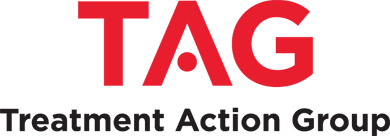Last updated 5/23/24
Some individuals who initiate antiretroviral therapy (ART) experience limited recovery of CD4 T cell numbers despite suppression of HIV viral load to undetectable levels. The most common risk factors for this type of discordant response to ART are low CD4 T cell count at the time of starting and older age. Individuals in this situation still experience a benefit from ART in terms of a greatly reduced risk of opportunistic infections, illness and death, but their risk of these outcomes is higher than among people with greater CD4 T cell gains (for additional background see the webinar hosted by TAG on November 29, 2017, our March 2018 Issue Brief, and a scientific review published on February 17, 2021.)
A number of clinical trials are investigating approaches that might boost CD4 T cell recovery in individuals whose CD4 T cell counts remain relatively low despite viral load suppression. The purpose of this page is to provide a resource listing of these clinical trials, which will be updated on an ongoing basis.
Complete information on the trials is available from clinicaltrials.gov by clicking on the study title link.
A Single Dose of Pembrolizumab in People with HIV
National Institutes of Health Clinical Center, Bethesda, Maryland, United States
ART for >/= 12 months, CD4 cell count 100-350, viral load <40 copies/mL for >/= 12 month (single blip >40 copies/mL but <500 copies/mL allowed)
Mesenchymal Stem Cells for Immune Non-responder Patients With HIV Infection
Shandong Public Health Clinical Center, Shandong, China
CD4 count <200 for people on ART for more than one year but less than two years
CD4 count <350 for people receiving ART for ≥2 years
On ART for at least one year, viral load <50 copies/mL during the last two years
ART regimen not changed in the 12 months prior to enrollment
Changes in Immunologic Parameters Following the Addition of Fostemsavir in Virologically Suppressed Immunologic Non-responders Living With HIV – the RECOVER Study
Orlando Immunology Center, Florida, United States
CD4 cell count<350 cells while on ART for at least 2 years, two viral load measurements <50 copies/mL within the last year prior to screening
Stable ART regimen for ≥6 months prior to screening
Stable insurance plan
Allogeneic Adoptive Immune Therapy for Advanced AIDS Patients
Beijing 302 Hospital of China
CD4 cell count </=200 cells/uL
Probiotic Supplementation for Those Immune Non-responders With HIV-1 Infection
Peking Union Medical College Hospital, Beijing, China
ART for >2 years, CD4 cell count <350 for past 2 years, undetectable viral load for past 2 years
Inflammation, NK Cells, Antisense Protein and Exosomes, and Correlation with Immune Response During HIV Infection (INKASE)
La Colombiere Hospital, Montpellier, Herault, France
Observational study (no interventions)
Age >45yrs, HIV viral load <50 copies/mL in the past 2 years
For immune non-responders: CD4 cell count < 350 on the last two tests
